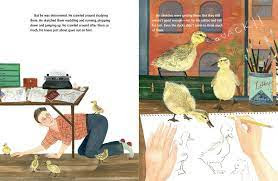"You are a body of water.
More that half of you is made up of water.
The water in your sweat cools you off. The
water in your saliva helps you eat. The water
in your blood helps carry nutrients to your
body. Rivers flow through you."
Do you know the many things you are? For a start, I am a mother, a grandmother, a sister, a writer, a reader, a woman, and a friend. But I am more than that, just as you are so much more.
A narrator, never seen, encourages young readers to think clearly about their place in the world. We are all special in our own ways; we are often the same and sometimes different. It is pointed out that we live, breathe, eat, sleep. We work and play. We think and remember. Beyond that we belong in a family, are an animal with bones, hair, and we call Earth our home.
I would love to be the fly on the wall that listens in as children add their own ideas to the many things that they are, do, learn, and use their senses.
"You share.
You listen.
You care about how others feel.
You are someone others can count on."
The children pictured digitally in definitive detail are as diverse and appealing as the text inspires them to be. They differ in skin color, hair styles, physical movement, family groups, and ways of being friends. There are so many possibilities, and they are clearly shown in scenes that show every day to be new and open for growth. Being human is a wondrous thing. This book invites its readers to consider who they are, and who they can be. Inspiring and uplifting.
"You are the author of your life.
Every day is a blank page waiting for you to fill it.”














































